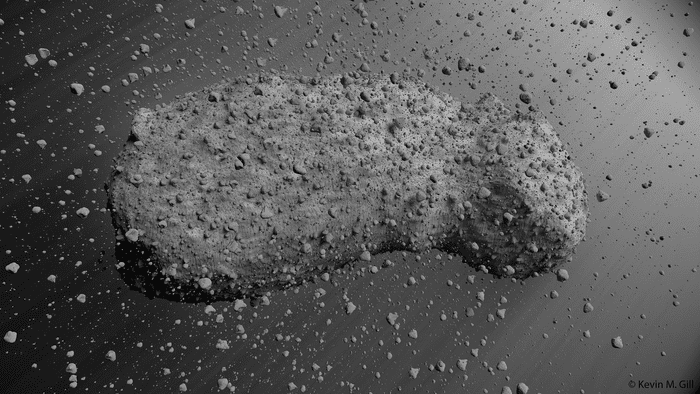On September 26, NASA’s Double Asteroid Redirection Test (DART) plowed into Dimorphos, successfully altering the asteroid’s orbit. The test proved that it is possible to nudge an asteroid off course, and away from Earth.
However, a new study led by Curtin University, found that all might not come as easily as the Dimorphos experiment. Itokawa is a 4.2 billion-year-old asteroid approximately 500 meters long and around two million miles away from our home planet (don’t worry, it’s not headed toward Earth). The difference between it and Dimorphous is that Itokawa is made of rocky rubble and dust and not a single giant lump of rock.
Three dust particles returned by the Japanese Space Agency’s Hayabusa 1 probe (Japanese for ‘falcon’) in 2010, found that Itokawa — and other asteroids like it — might be hard to destroy and resistant to a collision.
“Unlike monolithic asteroids, Itokawa is not a single lump of rock, but belongs to the rubble pile family which means it’s entirely made of loose boulders and rocks, with almost half of it being empty space,” said lead author Fred Jourdan, director of the Western Australian Argon Isotope Facility, part of the John de Laeter Centre and the School of Earth and Planetary Sciences at Curtin. “In short, we found that Itokawa is like a giant space cushion, and very hard to destroy.”
Itokawa is essentially a pile of rocks loosely held together by their mutual gravity. Presumably, any impact powerful enough to create a crater would shake loose rocks, which would then fill the crater.
Based on observations made by Hayabusa and Earthly telescopes, the asteroid is believed to be a fragment of a much larger object shattered by a previous collision. The analyzed dust also provides evidence that ordinary chondrite meteorites, the most frequent type of meteorite on Earth, are produced by S-type asteroids (this refers to the asteroid’s color spectrum) like Itokawa, the most frequent type of asteroid in the inner main belt.
“The huge impact that destroyed Itokawa’s monolithic parent asteroid and formed Itokawa happened at least 4.2 billion years ago,” Jourdan said. “Such an astonishingly long survival time for an asteroid the size of Itokawa is attributed to the shock-absorbent nature of rubble pile material.”
Two complementary techniques were used to analyze the three dust particles. The first technique, known as electron backscattered diffraction, can determine whether a rock has been impacted by a meteor. The second method – argon-argon dating – is used to date asteroid impacts.
Nick Timms, also from Curtin’s School of Earth and Planetary Sciences and a co-author of the paper, said the durability of rubble pile asteroids was previously unknown, jeopardizing the ability to design defense strategies in case one was hurtling toward Earth.
“We set out to answer whether rubble pile asteroids are resistant to being shocked or whether they fragment at the slightest knock,” Timms said. “Now that we have found they can survive in the solar system for almost its entire history, they must be more abundant in the asteroid belt than previously thought, so there is more chance that if a big asteroid is hurtling toward Earth, it will be a rubble pile.”
However, Timms said that learning about this durability can be used to our advantage.
“(I)f an asteroid is detected too late for a kinetic push, we can then potentially use a more aggressive approach like using the shockwave of a close-by nuclear blast to push a rubble-pile asteroid off course without destroying it.”
If you’d like to learn more about asteroid threats and what we can do to stop them, be sure to check out our interview with Mark Boslough, a physicist at Los Alamos National Laboratory and one of the world’s leading experts in planetary defense.







